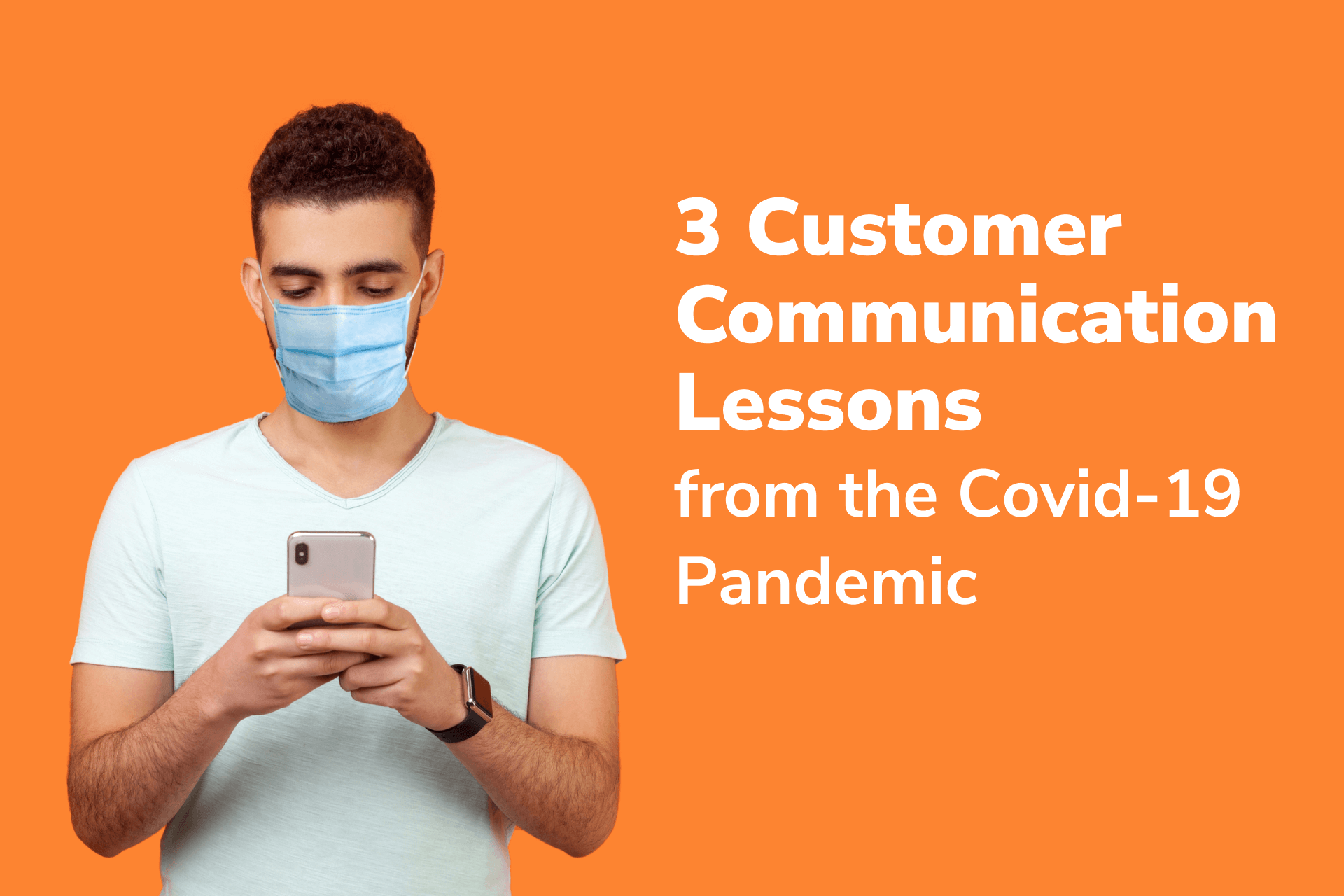In more ways than one, 2020 was a year of unprecedented challenges and changes. Below, we’ve outlined three important customer communication takeaways from uncertain times.
1. Lead with Empathy
For both companies and individuals, the stress of pandemic life has been a lesson in empathy and social consciousness. Faced with heightened economic pressure and a hypersensitive audience, many of us began scrutinizing our customer messaging with a more critical eye. For every new email, advertising campaign, blog article, tweet, and push notification we created during the pandemic, we asked: could this come off as insensitive or inauthentic? Is this the right message for this moment in time? Does this accurately reflect our brand values? Should we say something about....?
Of course, answering these questions is no easy feat. But the practice of evaluating brand communication through the eyes and daily experiences of your audience is an invaluable skill that’s worthy of cultivating in a post-pandemic future. Empathy is the cornerstone of trust and the crux of influence — two intangible characteristics that help successful companies outpace their competition.
2. Timing is Everything
As you continue to evolve your communication strategy in 2021, it’s important to remember that empathy is expressed (or omitted) in gestures and experiences as well as through words. Seemingly small details like message timing and personalization can have a huge impact on how an idea is perceived and what kind of emotional reaction it invokes.
The impact that unfortunate timing can have on (otherwise) sound messaging has never been more clear as during a global pandemic. Timing concerns were the reason why KFC nixed their “finger-lickin’ good” UK campaign slogan during a COVID spike. It’s also why Geico decided not to air their “Perfect High Five” commercial in March, which featured co-workers high-fiving in — imagine this — a real office.
Whereas poor timing can obscure a message, good timing can amplify its significance. As food and grocery delivery apps experience record downloads during the pandemic, real-time SMS order updates and delivery notifications have been essential to earning customer trust and loyalty. A variety of simple, well-timed messages help delivery apps facilitate a contactless exchange, provide a seamless cross-channel customer experience, and demonstrate respect for health and safety concerns.
Keeping context and timing top of mind can also help you adapt your messaging strategy to exceptional circumstances. Remember that poorly timed KFC campaign we mentioned earlier? Rather than accept defeat, KFC used timing to their advantage by transforming the mishap into a more cheeky, authentic, and COVID-conscious spinoff.
3. Transparency is More Important Than Perfection
Nearly 95 percent of the U.S. population has been subject to a stay at home order at some point during the pandemic. With that statistic in mind, it’s easy to see why there was a whopping 146 percent growth in online retail orders in the second half of 2020. Although higher sales were a silver lining for many retailers, the unexpected influx of orders added considerable stress to supply chains, overwhelmed fulfillment centers, and caused massive package gridlock during a socially distant holiday season.
As companies struggled to meet delivery timelines and keep their workforce safe, they faced a dilemma: should they be transparent about delays at checkout or apologize after the fact? Smart companies chose the first option: they apologized, explained the reason for the delay, re-aligned expectations, and asked for understanding in return.
Although many young companies tend to think of transparency as a calculated risk, psychological studies have proven that it’s actually an asset. Whether you’re setting expectations for a product release, asking someone to remain on hold for a customer service representative, or communicating a shipping delay, it pays to under-promise and over-deliver. In fact, one study of customer call-centers and rideshare apps found that the satisfaction "cost" associated with under-delivering on expectations (i.e. when the actual wait time ends up being longer than the communicated wait time) was seven times larger than the reward for over-delivery. In other words, optimistic estimates can backfire in a major way — especially in a climate of fear and uncertainty. Although playing your cards close to your chest may marginally curb cart abandonment rates, this small benefit is bound to be eclipsed by a negative customer experience and diminishing lifetime value.
Looking for more ways to boost ROI with best-in-class customer communication? Click the link below to learn how use push notifications to drive revenue and foster lasting customer relationships.




